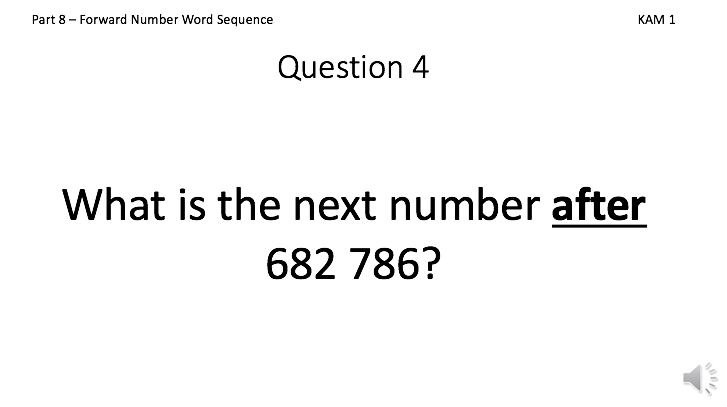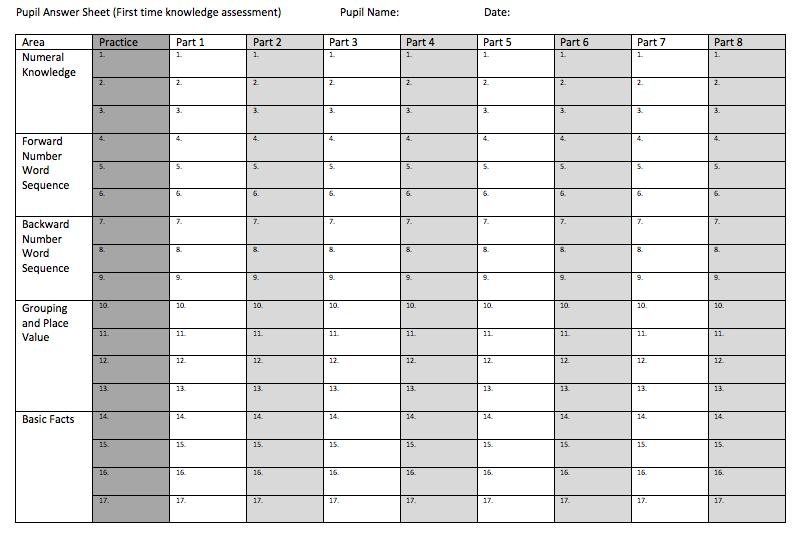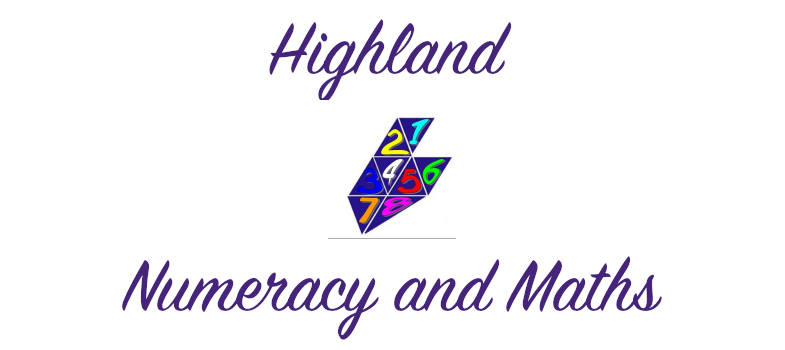8.1 What are the Digital Knowledge Assessments
What are they?
The digital knowledge assessments, which are presented to pupils through an automated PowerPoint presentation are similar (in terms of the questions being asked) to the 1:1 knowledge diagnostic assessments however there are some key differences which will be explored in Section 8.3.
Two forms exist:
- A complete knowledge assessment which covers:
- Numeral Knowledge
- Forward Number Word Sequence and Number Word After
- Backward Number Word Sequence and Number Word Before
- Grouping and Place Value
- Basic Facts
- An in-depth basic facts assessment
- This covers a greater range of questions than the 1:1 overview assessment.
How does it work?
- The presentation has an automated timing system so you can ensure that it is knowledge that is being demonstrated rather than strategy.
- All questions are read out to the pupil as well as being visible on the screen (see image below for an example).
- Presentation would generally be on an Interactive Whiteboard at the front of the class.
- You will get all the key strategy information from the strategy assessments - these still need to be completed 1:1.
- The delivery in this method means that a whole class or group can be assessed at the same time (rather than 1:1) and as such is much quicker to deliver and you get faster access to the information in order to impact on your teaching in a more timely manner.

- At the moment, pupils still need to record their answers on paper (an assessment recording sheet is provided - see image below for an example). We recommend you enlarge this to A3 so that pupils can more easily write their answers in.

There are of course advantages and disadvantages to this method of delivery. These will be explored in Section 8.4.
Future developments: We are hoping that in the near future, pupils will be able to record their responses on a digital device such as a Chrome Book (where these are available). This will again help to speed up the process leaving more time for analysing the information to inform planning and planning quality teaching to address the identified gaps.
